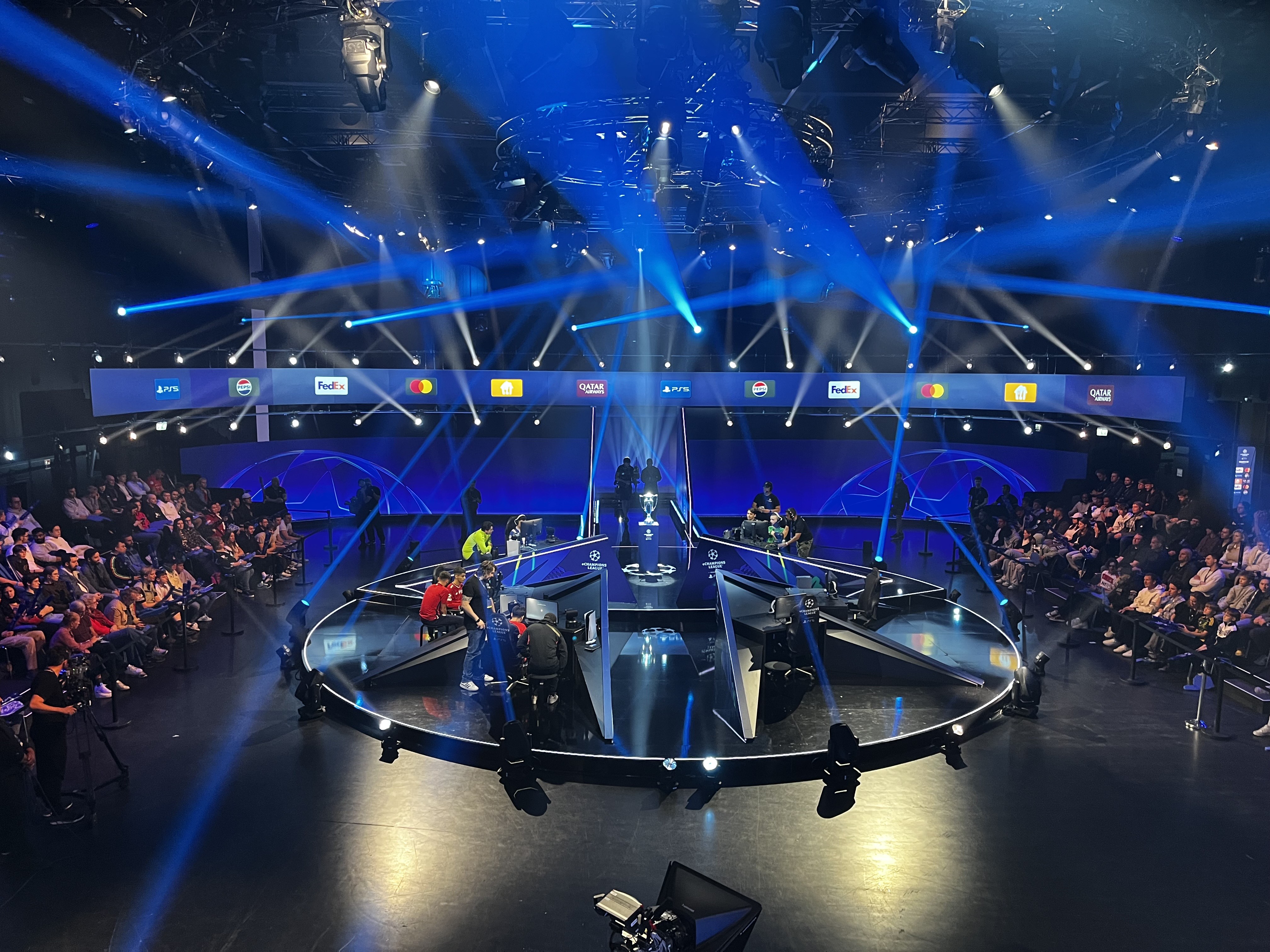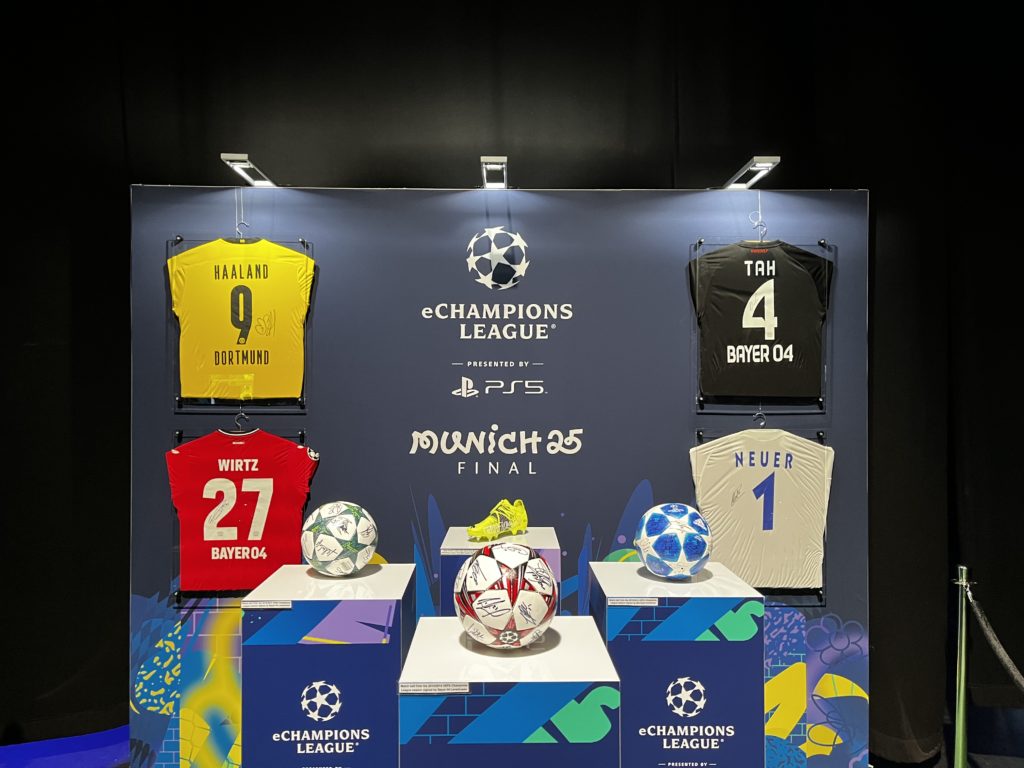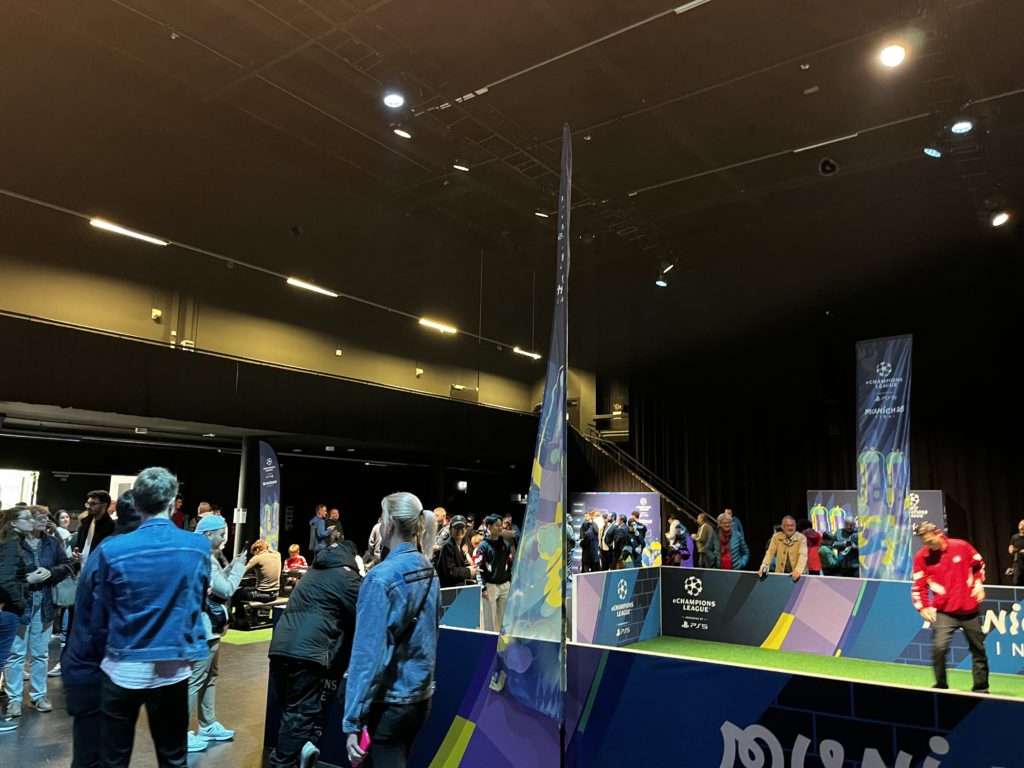By Harry Ewing in Munich
May 30 – When EA Sports unveiled the new-look UEFA eChampions League, the ambition was clear: to align competitive virtual football with the structure, emotion, and drama of the real thing.
“It’s just like in real life,” said Sam Turkbas, EA’s Senior Director of Football Esports, during an exclusive interview with Insideworldfootball at the eChampions League Finals in Munich on Wednesday. “From the group stage to the playoffs and finals, the format is designed to feel authentic – for players and viewers alike.”
That design change has transformed the competition. Where once a brutal Swiss format saw many talented players eliminated after just a few matches, the new system offers a more layered journey.
“You’re giving everybody a last-chance opportunity to move through,” said Turkbas. “Instead of eliminating the top half, you’re letting in the top two-thirds. So there’s that second chance at elimination in that playoff round – and I think that definitiveness really helps.”
Though the move was made to run parallel with UEFA’s Champions League restructure, for the fans, the change has meant better storytelling and greater connection.
“From a viewer perspective, you know the path the club or the player has to take. You know all six matchups – and that makes it much easier to follow and think about how you build that broadcast.”
This structured progression mirrors the UEFA Champions League’s appeal. Players are guaranteed game time, and audiences can follow narratives across several weeks – all crucial to growing viewership in an increasingly competitive entertainment landscape.
The eChampions League may crown elite players, but Turkbas sees it as part of a broader system rooted in accessibility and opportunity. Young breakout stars like Alihanlion, just 16, have risen through EA’s open ecosystem – a pipeline that begins with FC Pro Open, a truly global amateur competition.
“Alihanlion, Anders, Tekkz – they’ve all come through the open system,” Turkbas said. “You compete in ladders, in regional tournaments, and if you’re good enough, you get to global events. It’s robust – and that’s where some of the best talent comes from.”
Clubs are increasingly scouting for this talent early. “Red Bull Leipzig is one of the best examples,” Turkbas explained. “They signed a player before he was even 16. These clubs are building rosters for the future – just like in real football.”
What makes the top players stand out isn’t just their skill – it’s how they carry themselves, on and off the virtual pitch.
“Some players speak with their performance,” said Turkbas. “Others have outsized personalities. And some can do both.”
He points to pro players Tekkz, Anders, and Nicholas99 – each a household name in the esports world. “Tex is all action, while Nicholas is known as ‘The Iceman’. They’ve developed personas that resonate — and we encourage that. We don’t want to force anyone to be something they’re not. But we want to help them bring their brand to life.”
EA provides players with workshops and content support, helping them create reels, intros, and strategy breakdowns – content designed not just to entertain, but to educate and build loyalty.
“Our job is to make sure the programme appeals to players. That means helping them understand tactics, improve their game, and feel like they belong.”
As esports grows, so too does the expectation that it will take a seat at the mainstream table. Turkbas believes that moment is near – especially for football esports.
“Gaming is on track to become the biggest form of entertainment globally. Esports is a natural evolution of that. The more people who play, the more want to watch the best do it.”
EA Sports already sees blockbuster engagement. Its esports content achieved over 7 billion impressions and 400 million engagements across platforms in 2024 alone. But Turkbas insists it’s not about competing with traditional sport – it’s about complementing it.
“You might watch a UEFA Champions League match and see eChampions League content pop up next to it. That could be interesting for fans who play FC 25 but don’t yet follow our esports competitions. It’s about identifying the right opportunities, and surfacing the right content for the right audience.”
Looking ahead, Turkbas is focused on balance. Scaling the product – making it bigger, slicker, more visible – must not come at the expense of open opportunity.
“You’re always going to be limiting opportunities in elite tournaments – that’s what makes them elite. But if you maintain an open, accessible route at the grassroots level, you can still capture the best talent.”
In other words: give everyone a shot, and the very best will rise to the top – just like in real football.
And in the UEFA eChampions League, that philosophy is beginning to pay off.
Contact the writer of this story, Harry Ewing, at moc.l1751307800labto1751307800ofdlr1751307800owedi1751307800sni@g1751307800niwe.1751307800yrrah1751307800




